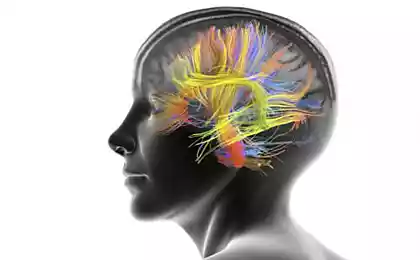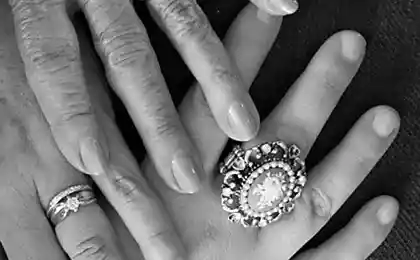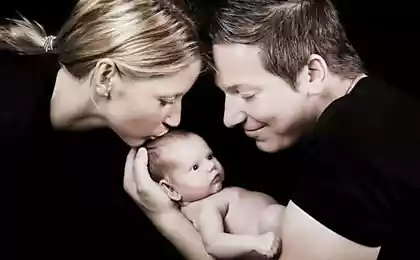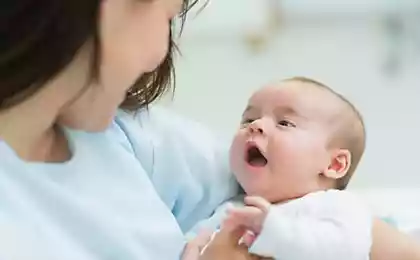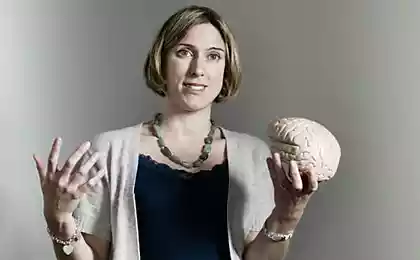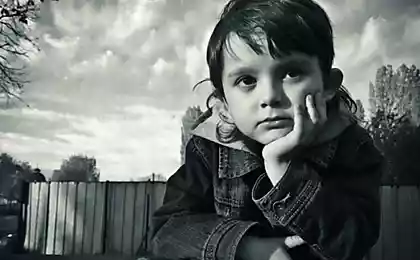513
This knowledge is very important for parents! Age stages of maturation of the brain
The brain is one of the most important organs in the human body. For understanding the processes of human growth, maturation, and ability of the child/teenager/adult to any actions, grades, behavior, etc. (for "Mature"- in General) need to understand how the brain works, which parts and when ripe, for what, what the processes are in different subsections of the brain.
Eighty one million five hundred thirty five thousand thirty three
Such knowledge is especially important for parents of HF kids, RF-Teens so as not to burden the child with their high expectations and pressure phrases "and you're already in the age of X years old would have..." (and followed a number of requirements that the child is not able to perform, because brain is not yet "ripe").
According to the study in particular Dr. Gordon Neufeld (University Neufeld, Vancouver, Canada), the development of certain parts of the brain at the HF-children (and therefore - and the development of brain functions) is slower on the stages require more time and brain Matures longer.
Seventy five million five hundred ninety seven thousand two hundred seventy three
An interactive illustration showing the stages of maturation of the tissues of the brain (click to play)
Different regions of the brain Mature at different times. This knowledge helps to explain the emotional and intellectual changes in children, adolescents and young people. Despite the fact that no two children are identical developing, scientists, using magnetic resonance imaging, which were made by the same children over several years have established the relationship between certain stages of child development and changes in the brain tissue.
To see how the brain Matures, press the flash animation. The color scale indicates the maturation of the brain tissues, from red, orange and yellow to green, blue and purple.
0 – 4 years
Early development – In the first few years of life in a faster change of the area of the brain associated with basic functions. For 4 years almost fully developed region responsible for basic senses and gross motor functions. The child can walk, hold a pencil and eat by themselves.
Feelings – area responsible for sensations, e.g., tactile, developed almost completely.
View – The area of the brain that control vision are fully matured.
6 years
Language – the brain region responsible for speech is immature and painted orange, but continues to develop rapidly in children up to 10 years. The brain is already beginning the process of "thinning", destroying unwanted communication. In subsequent years this process will increase, which may be one explanation why young children, unlike adults, can easily learn a new language.
Mind yellow and red areas of the prefrontal cortex indicate that these parts of the brain responsible for abstract thinking, ability to think rationally and emotional maturity is not yet developed. Their lack of maturity is one of the reasons why young children find it difficult to accept a large amount of information and when they are offered too many choices, children have tantrums happen.
9 years
Fine motor skills – If General motor skills well developed by 5 years, fine motor development increasingly develops between 8 and 9 years. Children are easier to write, but in the DIY they go to a new level of accuracy.
Mathematics To 9 years begin to Mature parietal lobe of the brain. Their development allows children to master the skills in math and geometry. The learning rate at this age is very big.
13 years
Prudence – prefrontal cortex Matures one of the last areas of the brain. While it has not developed, children lack the ability to adequately assess risk or build long-term plans.
Emotions deep in the limbic system, a growing capacity to experience emotions. But this ability is not constrained by prefrontal cortex, which is lagging behind in development. Therefore, adolescents are often so hard to restrain their emotions.
Logic – In this age of rapid development of the parietal lobe, which in the figure marked with blue color. Intelligence and analytical skills of the child grow.
15 years
Specialization – in adolescence, the abundance of neural connections continues to decrease. Rarely used connection would die to help to develop more active relations. As a result, the brain becomes more specialized and efficient, productive.
17 years
Abstract thinking – Dark blue and purple color of the Mature areas of the prefrontal cortex shows why at the senior teenage age children are able to deal with much more complex things than in childhood. The development of these areas leads to a surge in social activity and expression of emotions among older Teens. Be possible the planning, risk assessment and self-control.
Twenty one
Higher mental functions Although, at first glance, it seems that the brain is almost fully developed in adolescence, dark blue and purple in this picture shows that the strong lack of emotional maturity, impulse control and ability to make decisions impact until adulthood.
Maturity – brain 21-year-old young man almost ripe. But the field of green show that even on achieving official "adult" age in our mind there are still areas that have potential for development. Emotional maturity and ability to make decisions will develop in the coming years. published
Author: Olga Pisarik
P. S. And remember, just changing your mind — together we change the world! ©
Source: hsp-portal.com/2015/09/08/o-vozrastnyh-etapah-sozrevaniya-mozga-cheloveka/
Eighty one million five hundred thirty five thousand thirty three
Such knowledge is especially important for parents of HF kids, RF-Teens so as not to burden the child with their high expectations and pressure phrases "and you're already in the age of X years old would have..." (and followed a number of requirements that the child is not able to perform, because brain is not yet "ripe").
According to the study in particular Dr. Gordon Neufeld (University Neufeld, Vancouver, Canada), the development of certain parts of the brain at the HF-children (and therefore - and the development of brain functions) is slower on the stages require more time and brain Matures longer.
Seventy five million five hundred ninety seven thousand two hundred seventy three
An interactive illustration showing the stages of maturation of the tissues of the brain (click to play)
Different regions of the brain Mature at different times. This knowledge helps to explain the emotional and intellectual changes in children, adolescents and young people. Despite the fact that no two children are identical developing, scientists, using magnetic resonance imaging, which were made by the same children over several years have established the relationship between certain stages of child development and changes in the brain tissue.
To see how the brain Matures, press the flash animation. The color scale indicates the maturation of the brain tissues, from red, orange and yellow to green, blue and purple.
0 – 4 years
Early development – In the first few years of life in a faster change of the area of the brain associated with basic functions. For 4 years almost fully developed region responsible for basic senses and gross motor functions. The child can walk, hold a pencil and eat by themselves.
Feelings – area responsible for sensations, e.g., tactile, developed almost completely.
View – The area of the brain that control vision are fully matured.
6 years
Language – the brain region responsible for speech is immature and painted orange, but continues to develop rapidly in children up to 10 years. The brain is already beginning the process of "thinning", destroying unwanted communication. In subsequent years this process will increase, which may be one explanation why young children, unlike adults, can easily learn a new language.
Mind yellow and red areas of the prefrontal cortex indicate that these parts of the brain responsible for abstract thinking, ability to think rationally and emotional maturity is not yet developed. Their lack of maturity is one of the reasons why young children find it difficult to accept a large amount of information and when they are offered too many choices, children have tantrums happen.
9 years
Fine motor skills – If General motor skills well developed by 5 years, fine motor development increasingly develops between 8 and 9 years. Children are easier to write, but in the DIY they go to a new level of accuracy.
Mathematics To 9 years begin to Mature parietal lobe of the brain. Their development allows children to master the skills in math and geometry. The learning rate at this age is very big.
13 years
Prudence – prefrontal cortex Matures one of the last areas of the brain. While it has not developed, children lack the ability to adequately assess risk or build long-term plans.
Emotions deep in the limbic system, a growing capacity to experience emotions. But this ability is not constrained by prefrontal cortex, which is lagging behind in development. Therefore, adolescents are often so hard to restrain their emotions.
Logic – In this age of rapid development of the parietal lobe, which in the figure marked with blue color. Intelligence and analytical skills of the child grow.
15 years
Specialization – in adolescence, the abundance of neural connections continues to decrease. Rarely used connection would die to help to develop more active relations. As a result, the brain becomes more specialized and efficient, productive.
17 years
Abstract thinking – Dark blue and purple color of the Mature areas of the prefrontal cortex shows why at the senior teenage age children are able to deal with much more complex things than in childhood. The development of these areas leads to a surge in social activity and expression of emotions among older Teens. Be possible the planning, risk assessment and self-control.
Twenty one
Higher mental functions Although, at first glance, it seems that the brain is almost fully developed in adolescence, dark blue and purple in this picture shows that the strong lack of emotional maturity, impulse control and ability to make decisions impact until adulthood.
Maturity – brain 21-year-old young man almost ripe. But the field of green show that even on achieving official "adult" age in our mind there are still areas that have potential for development. Emotional maturity and ability to make decisions will develop in the coming years. published
Author: Olga Pisarik
P. S. And remember, just changing your mind — together we change the world! ©
Source: hsp-portal.com/2015/09/08/o-vozrastnyh-etapah-sozrevaniya-mozga-cheloveka/






